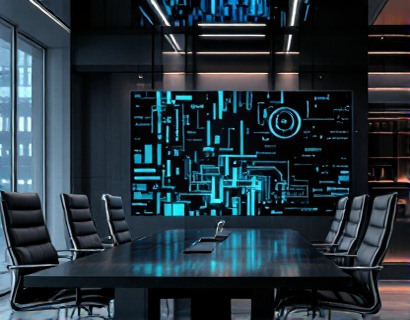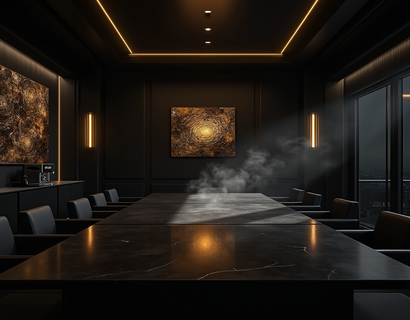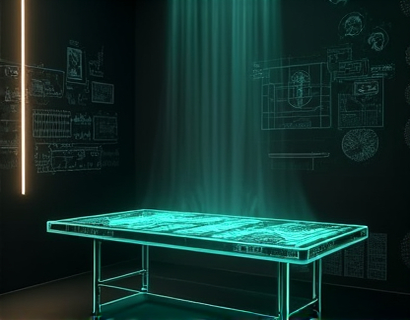Maximizing Architecture Firm Efficiency with Advanced Software Solutions
In the competitive landscape of architecture firms, efficiency and productivity are paramount. Advanced software solutions play a crucial role in streamlining internal processes and enhancing user experience, allowing architects to concentrate on their creative excellence. This article delves into the various ways technology can optimize project management, resource allocation, and client interactions, ultimately leading to improved overall performance and collaboration within architecture firms.
Streamlining Project Management
Effective project management is the backbone of any successful architecture firm. Advanced software solutions offer robust tools that simplify the planning, execution, and monitoring of projects. These platforms provide centralized dashboards where team members can track progress, manage timelines, and allocate resources with precision. By automating routine tasks such as scheduling and reporting, these tools reduce the likelihood of human error and free up valuable time for more strategic activities.
One key feature of these software solutions is the ability to integrate with other tools and systems used within the firm. For instance, seamless integration with CAD software, BIM tools, and ERP systems ensures a smooth workflow, minimizing the need for manual data entry and synchronization. This integration not only saves time but also ensures data consistency and accuracy across all stages of the project lifecycle.
Enhancing Resource Allocation
Optimizing resource allocation is critical for maintaining project timelines and budgets. Advanced software solutions provide sophisticated resource management capabilities that help firms allocate human and material resources more effectively. These tools allow managers to visualize resource availability, track utilization, and make informed decisions about staffing and material procurement.
For example, some software platforms offer predictive analytics that forecast resource needs based on historical data and current project requirements. This proactive approach helps firms avoid overstaffing or understaffing, ensuring that resources are used efficiently and costs are kept under control. Additionally, these tools can help identify bottlenecks and inefficiencies, enabling managers to take corrective actions promptly.
Improving Client Interactions
Client satisfaction is a key driver of success for architecture firms. Advanced software solutions enhance client interactions by providing secure, user-friendly portals for communication and collaboration. These portals allow clients to access project updates, view 3D models, and provide feedback in real-time, fostering a more transparent and collaborative relationship.
Moreover, these platforms often include features for managing client documents and communications, ensuring that all relevant information is easily accessible and well-organized. This not only improves the client experience but also reduces the administrative burden on the firm’s staff. By automating routine tasks such as sending reminders and notifications, firms can focus on delivering high-quality service and building long-term client relationships.
Boosting Collaboration and Communication
Collaboration is essential in architecture, where multiple stakeholders, including clients, engineers, and contractors, need to work together seamlessly. Advanced software solutions facilitate better communication and collaboration by providing shared workspaces and real-time collaboration tools. Team members can work on the same project simultaneously, regardless of their physical location, ensuring that everyone is on the same page.
These platforms often include chat and messaging features, video conferencing, and file-sharing capabilities, making it easier for team members to stay connected and productive. The ability to comment directly on design files and track changes enhances transparency and accountability, reducing misunderstandings and delays. This level of collaboration not only speeds up the design process but also leads to higher-quality outcomes.
Enhancing User Experience
The user experience of software solutions is crucial for adoption and effectiveness. Advanced architecture software is designed with the end-user in mind, focusing on intuitive interfaces and user-friendly features. These platforms are typically cloud-based, allowing users to access their projects from anywhere with an internet connection, which is particularly beneficial for remote work and collaboration.
Moreover, these solutions often come with comprehensive training and support resources, ensuring that users can maximize the software’s capabilities. Regular updates and improvements based on user feedback further enhance the user experience, keeping the software relevant and effective in a rapidly evolving industry.
Case Studies and Success Stories
Several architecture firms have successfully implemented advanced software solutions, resulting in significant improvements in efficiency and productivity. For instance, a mid-sized firm in New York reported a 30% reduction in project delivery time after adopting a comprehensive project management tool. The firm’s managers attributed this improvement to better resource allocation and real-time visibility into project status.
Another firm in San Francisco leveraged a client portal to enhance communication and collaboration. Client satisfaction scores increased by 25% within six months of implementation, primarily due to the ability to provide timely updates and feedback. The firm also noted a reduction in administrative tasks, allowing staff to focus more on design and client interaction.
Challenges and Considerations
While the benefits of advanced software solutions are clear, there are several challenges and considerations that architecture firms should keep in mind. One common challenge is the initial cost of implementation, which can be a barrier for smaller firms. However, many software providers offer flexible pricing models, including subscription-based plans, to make these solutions more accessible.
Another consideration is the need for proper training and support to ensure smooth adoption. Firms should invest in comprehensive training programs and maintain a dedicated support team to address any issues that may arise. Additionally, ensuring data security and compliance with industry regulations is crucial, especially when handling sensitive client information.
Future Trends in Architecture Software
The architecture software landscape is continually evolving, with new technologies and trends emerging regularly. One notable trend is the integration of artificial intelligence (AI) and machine learning (ML) into software solutions. These technologies can automate complex tasks, provide predictive insights, and enhance design processes. For example, AI-powered tools can analyze vast amounts of data to suggest optimal design solutions, reducing the time and effort required from architects.
Another trend is the increasing adoption of virtual and augmented reality (VR/AR) in the design and presentation phases. These technologies allow clients to experience designs in a more immersive and realistic way, leading to better decision-making and client satisfaction. As these technologies become more mainstream, their integration into standard software solutions is likely to grow.
Conclusion
Advanced software solutions offer architecture firms a powerful means to maximize efficiency, streamline processes, and enhance user experience. By leveraging these tools, firms can focus more on creative excellence while ensuring project success and client satisfaction. As the industry continues to evolve, embracing innovative software solutions will be essential for staying competitive and achieving long-term success.










































